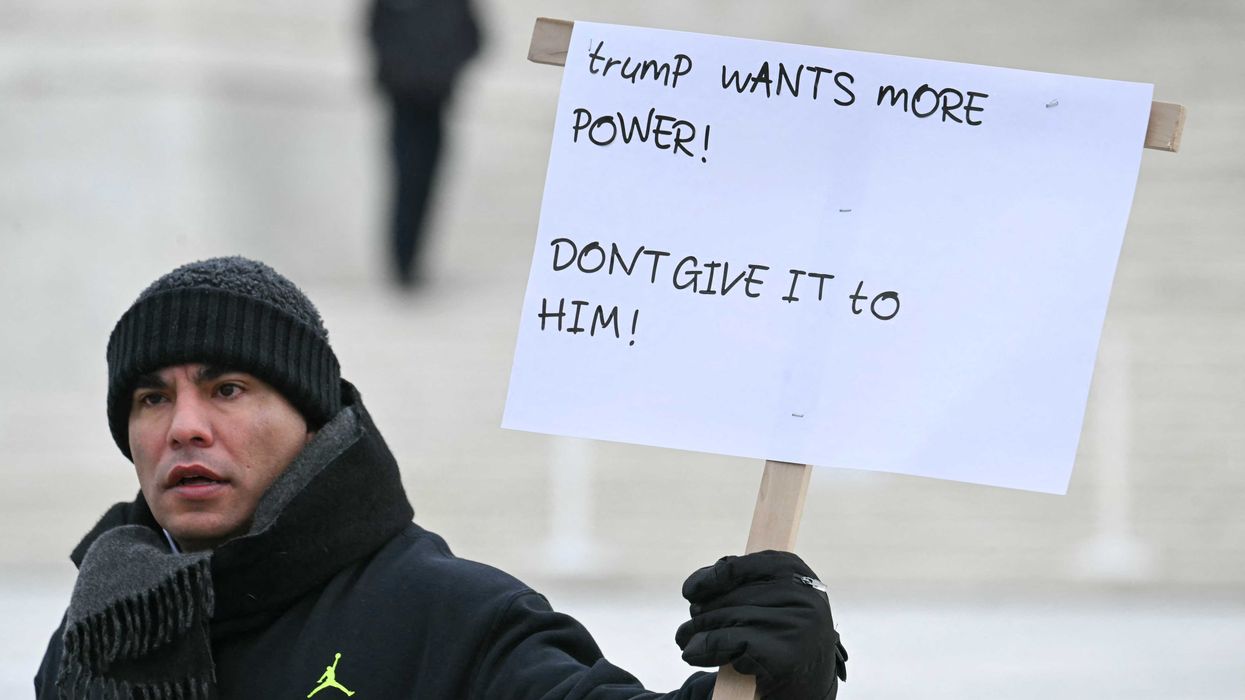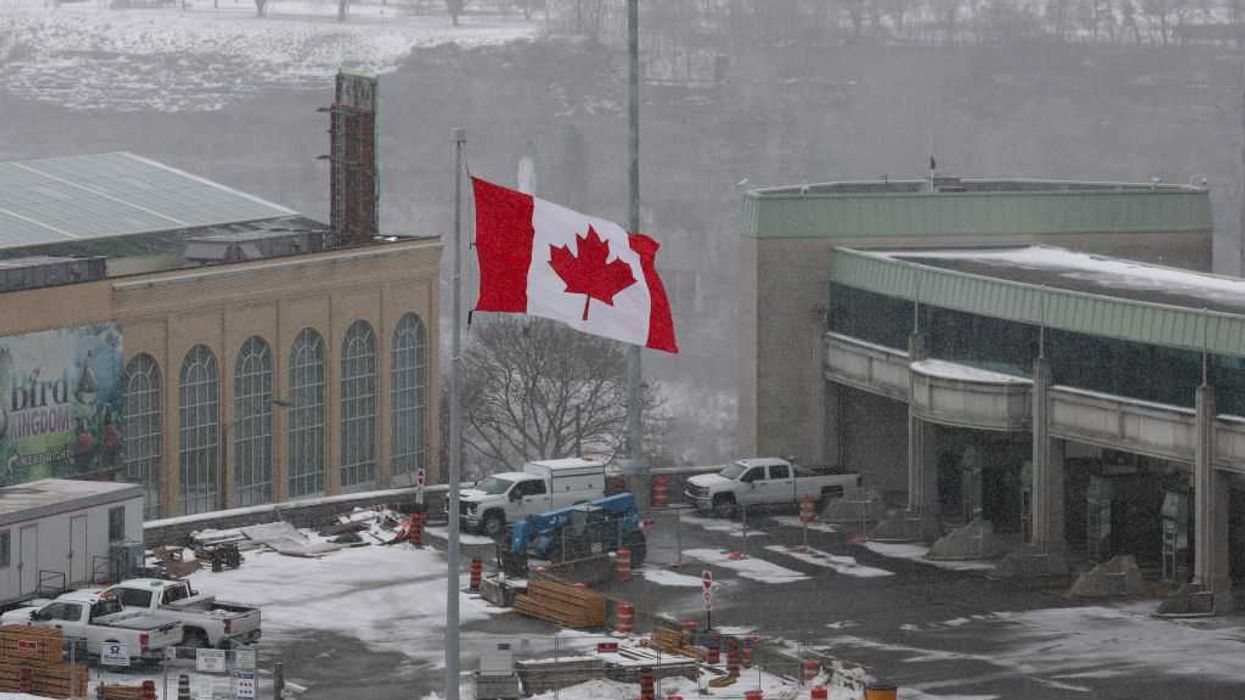DOC: It's Doc Thompson in for Glenn Beck. I'm regularly heard on TheBlaze Radio Network. TheBlazeRadio.com. You want to find out more, follow me on Twitter. It's @DocThompsonShow. My buddy and cohort from The Morning Blaze, Kris Cruz, as well as Kal is spinning the dials radio-style for us as well.
Last night, just hours ago, on the strip in Las Vegas, a gunman on the 32nd floor of the Mandalay Hotel fired countless rounds into the crowd below, including a concert across the street. As it stands, 50 people confirmed dead. That number is likely to grow. Over 400 injured.
Just to give you the quick update. One suspect killed himself as police broke into his room. 64-year-old Stephen Paddock is his name. (cuts out)
DOC: When a man blew up the school there. Just to put it all into perspective. Prior to today, the deadliest mass shooting in America was the Pulse Nightclub in Orlando. Prior to that, it was Sandy Hook.
Our friend John Di Domenico is a Trump supporter and entertainer who lives in Las Vegas. We've had him on this program and our program on the past, and has a little perspective living just, ten, 15 minutes from the Mandalay Bay.
Hey, John, how are you?
JOHN: Hey, Doc, how are you doing, man?
DOC: This is so bad, John. This is so horrible.
JOHN: This is a very small town. I moved here six years ago and was very lucky to be part of the entertainment community here. I had multiple friends at the festival. And two women, particularly. One is a singer. One is a country singer. She -- I saw that she was there. I was checking Instagram, Facebook. They were having a great time. Posting photos.
And then right before I went to bed, I checked again, and they said they were being shot at.
DOC: Wow.
JOHN: And the one woman -- I don't want to give any names for privacy. But the one -- (cuts out) was great. They're just shattered. They're horrified. This is their hometown. They went there to have a great time. And they were almost killed. So it -- it's just a horrible, horrible situation.
DOC: Well, John, let's look at a different perspective there. You're right. This is horrible. And obviously, we never want this to happen. We certainly don't want it to happen again. But let's look at some of the, albeit, small by comparison, but positive stories. The stories of self-sacrifice like that, people pushing others out of the way.
JOHN: Yeah.
DOC: Sacrificing themselves. Covering people. And ended up taking a bullet and dying themselves.
JOHN: Right.
And I just want to read you the line, what she wrote. A man that we did not know laid on top of us and covered Amy's head. He was shot from behind. The lady right next to us was grazed in the neck. So, yeah, there was a lot of heroism. We have amazing first responders here, incredible police. I also had -- you know, like I said, I had multiple friends there. And beyond the fact that it's hard to believe, yeah, a lot of people rose to the occasion. Were able to kind of be clear, move people out, get people behind the stage, get people to safety. So, yeah, there's -- in these -- in these moments, in these tragedies, people really speak out and figure out a way to focus and help others.
DOC: John, tell me about this venue. When I lived in Vegas, it was in the early '90s. The Mandalay Bay wasn't even there. It was the Hacienda back in the day. And then the strip ended up developing quite a bit after I left.
Tell me about this outdoor venue. It's diagonally across the street?
JOHN: Yeah. So Mandalay Bay is at the southern end of the Las Vegas (cuts out).
DOC: That space, it's many acres.
KRIS: Yeah, it's huge.
JOHN: It's huge.
KRIS: Like John said, you can fit the iHeartRadio concert. A lot of people do different concerts. And I actually didn't know that, that the American ninja warrior was filmed. There. That makes sense.
DOC: That makes sense.
JOHN: They fill tons of stages. And you can move around. And they have a lot of festivals. And card games. And this -- this man obviously knew this was coming to town. And he obviously asked for a room on the high floor. And then did what -- he did the unthinkable. And has shattered many, many people's lives. Killed many people.
DOC: We figured this morning, we speculated, and it made a lot of sense that he likely did this to time it when the concert was there, because he's going to have thousands and thousands of people that are a target. And that's how it seems this morning.
JOHN: Yeah.
DOC: It's interesting, John. We're looking at the pictures coming out of the Mandalay Bay this morning. And there are two windows, on the hotel, that are broken out. But it's interesting because those windows are dozens of those little squares. I don't know if that represents --
CALLER: They're full-sized windows. They're full-sized windows.
DOC: So would one of those be a room?
JOHN: Three of them would probably be a room.
DOC: So we're seeing them at kind of a point.
KRIS: It's like an X.
DOC: Yeah, it's like -- yeah, it's like that. Is on kind of like one of the points. And then eight to ten windows, kind of down the side, is another broken out window. We don't know why yet. Interesting.
JOHN: Uh-huh. Yeah, I have -- I have no idea about -- about that. I -- and this is, you know -- it would seem to me that there were -- there was another shooter. I don't want to --
DOC: Yeah, the police have not confirmed that. It could have been him. It could have been somebody else breaking out the window. It could have been anything.
JOHN: Also there's echo there. Terrible. But he was very calculating on how he did this and timed it and his angle and all those things.
DOC: So, John, I was thinking about it this morning and talking about priorities and about how some reason we don't prioritize what's important. And a lot of us don't in our own lives. It's easy to get pissed off at somebody in front of you in traffic or whatever. And you go, you know what, at least I wasn't shot up in Vegas, right? That's how it was. (cuts out)
DOC: -- melting down. I mean, this is ridiculous.
JOHN: It is. And, you know, we're -- you know, we love this -- we've all loved this country. And we're smart people. And a lot of us are from -- a lot of people who are at each other are from a lot of the same places. That have the same -- actually the same core values. When stuff like this -- you make a great point. When stuff like this happens, those other things are so trivial and actually would be so easy to come to an agreement on or get around in some way. You know what I mean? Let's work this out.
We love this country. It's an amazing place. We're living in -- you know, all -- this wonderful time as far as technology, all these things that are happening.
But to see something like this and then we're -- like you just said, a few days ago --
DOC: So stupid. You know.
JOHN: Yeah. Our lives are so short and so precious, and we're wasting time.
DOC: Screwing around with that stuff.
JOHN: Yeah.
DOC: See, John, there's no bringing back the 50 people that were killed. But still, we could come to some reasonable conversation -- or, reasonable understanding about statues, right? There's nobody dead there, right? Columbus Day being offensive to some people. Okay. We can have that discussion because nobody is dead.
JOHN: Right. Yeah. We're getting -- we're getting tied up in wasting our lives, actually.
DOC: All right.
JOHN: It's time to refocus and get back to things that are important, like human life.
DOC: Exactly. Right. That may matter, okay.
JOHN: Yeah.
DOC: John Di Domenico, buddy. Thanks so much for joining us. Okay?
JOHN: Thank you, guys. And thanks for all your prayers for Las Vegas. This is a great town. And we're going to come back. This is a great place to come and have a great time. And the police are amazing. And the first responders, like I said.
DOC: All right, John. Thanks, buddy. What I'll do is I'll tweet out a link to John's account as well so you can find him. He's a good guy.

 JIM WATSON / Contributor | Getty Images
JIM WATSON / Contributor | Getty Images
 Joe Raedle / Staff | Getty Images
Joe Raedle / Staff | Getty Images AASHISH KIPHAYET / Contributor | Getty Images
AASHISH KIPHAYET / Contributor | Getty Images Harold M. Lambert / Contributor | Getty Images
Harold M. Lambert / Contributor | Getty Images